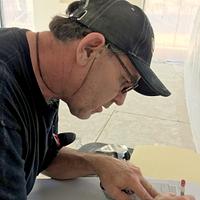
lanwater
in over 11 years
Learning veneer #6: Problems Repair
This is
part 6
in a
8 part
series:
Learning veneer
I got some shop time last weekend and decided to do some more veneering.
While working on my last panel for the veneer box, I messed up with the scraper. That should be an easy repair:
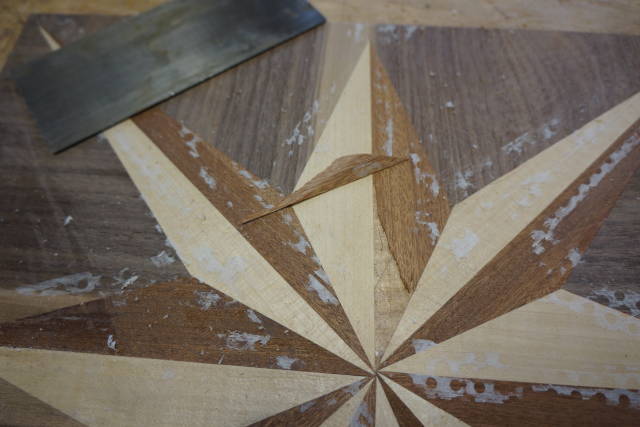
I was a little upset and decided to leave the panel alone for now and move on some long panel veneer hammering.
The first test with Quilted Curupixa Veneer on a 6.5"x 55" 1/2 plywood went without any problem.
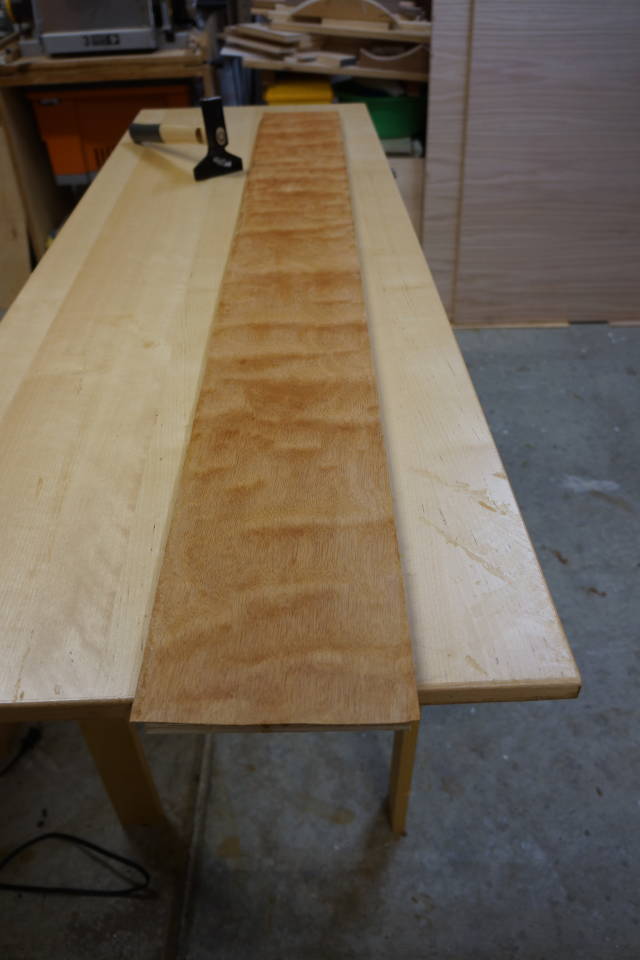
I moved to walnut veneering on a 1/8 inch panel. 12"x 60" piece of curly walnut.
At first everything was nice and flat. I can’t convey how happy I was.
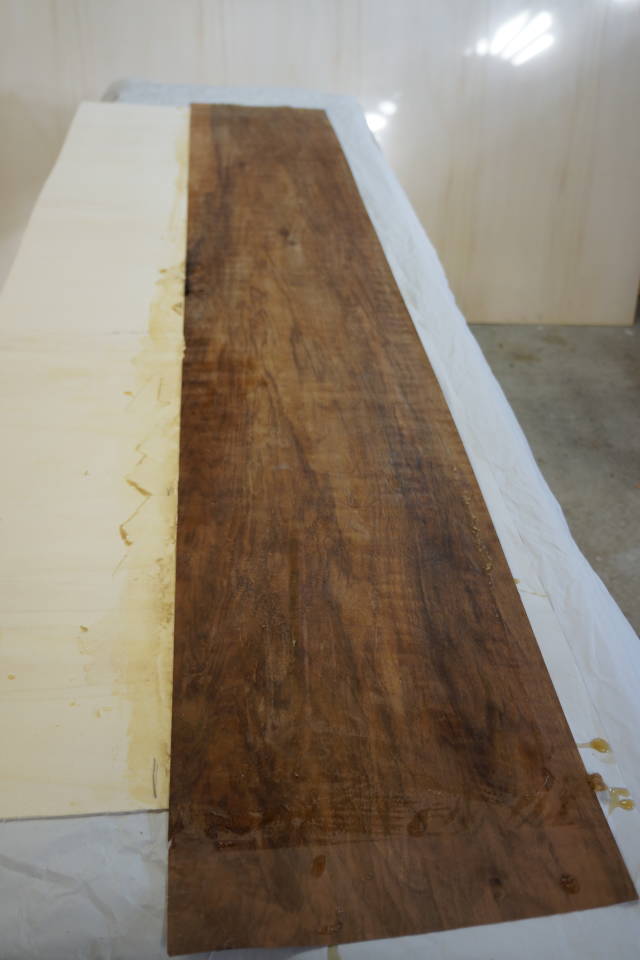
about an hour later I hammered the second half of the panel.
I proceeded to cleanup the glue from the top and shortly after I got ripples and bubbles (:-
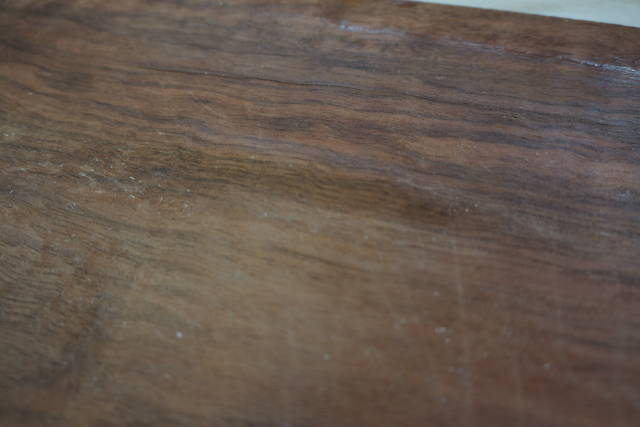
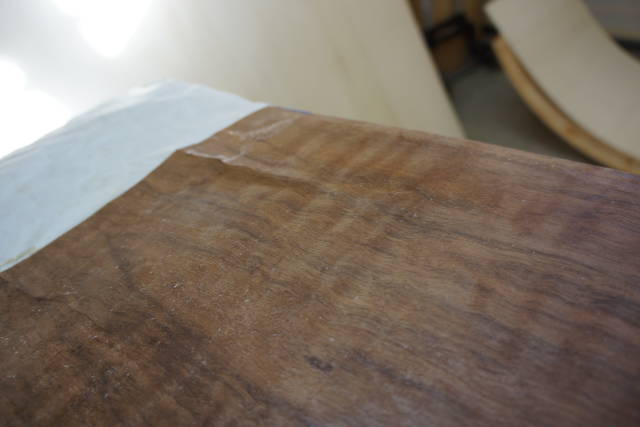
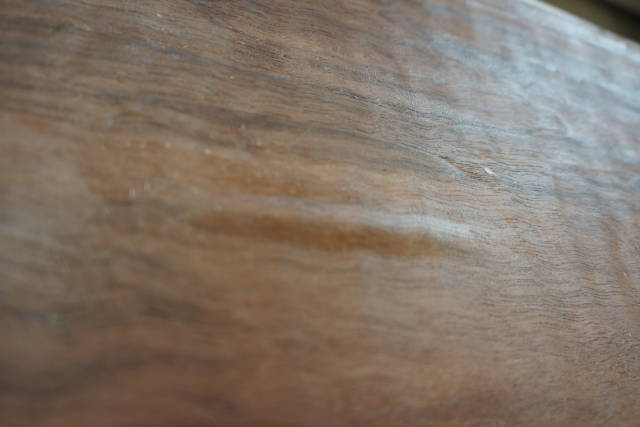
Panic set in and tried to iron them down but that did not work.
So I slit the ripples in the middle along the grain with the knife and iron the down. that seems to work.
But… it they didn’t quite close nicely they slightly overlaped at the cut:
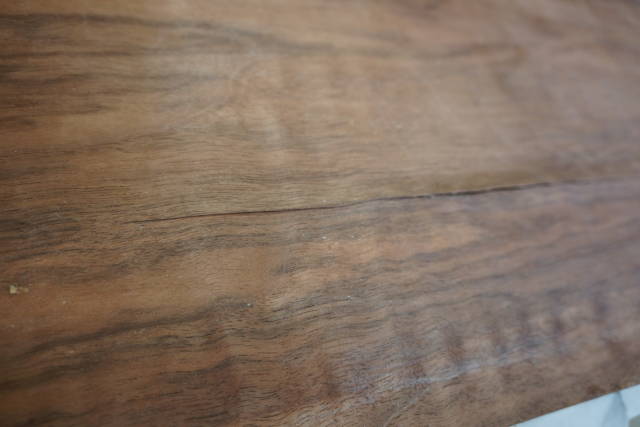
My guess is the ripples were too high so the total surface of the “dome” part was bigger than the base.
Now all the videos I watched on the subject seem to imply that it will be a perfect fit after the cut and iron.
If I cut the overlap, because it’s so little (approximately 0.5 mm), I am afraid I am going to create a gap.
How to fix it?
Abbas, Castro Valley, CA
4 Comments
From what you are saying my guess would be that you may have caused the problem by cleaning up too soon. If it was down flat and you were happy, it was likely a good glue-up. However if you then cleaned the surface with water, even cold water, before the glue was completely dry you could both weaken the glue underneath and cause new expansion in the veneer. This would be a particular problem with a figured veneer. If you had waited until it was good and dry, the iron may have worked better. The only reason for making a slit (I think) would be if the blister was full of glue as would be the case if your glue was too thick / too cool. Your problem was more likely caused by wood expansion over glue that wasn’t completely cured.
Just my opinion. Hammer veneering can be more of an art than a science sometimes. The good thing is you are learning all of this by experiment and not on a piece that needs to be perfect.
The early bird gets the worm but its the second mouse that gets the cheese.
I had the feeling it’s all the warm water I used to cleanup.
I had to thin the glue about 3% by volume to have enough time before the gel occurred.
I will try again with no dilution but heating up the substrate with the iron before applying the glue.
The good news is I am gaining more experience. Every time there is something to fix it’s extra bonus in term of learning; a little frustrating but it’s good learning.
Thanks Paul!
Abbas, Castro Valley, CA
Good going guinea pig, keep it up. :)
Were learning through your experiments.
Looking forward to the next installment.
Figuring out how to do something you have never done is what makes a good challenge.
The battle of the hide.
Coming soon to a theater near you…-:)
Abbas, Castro Valley, CA










